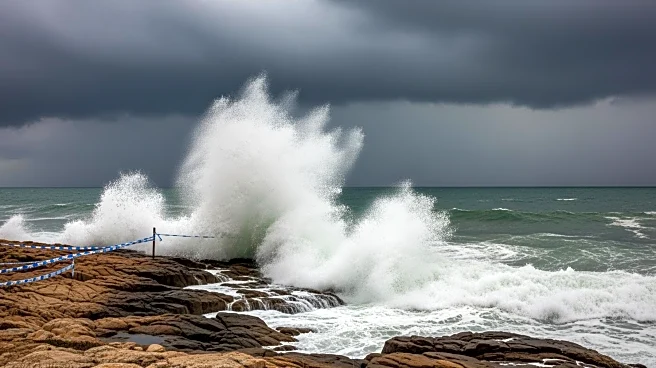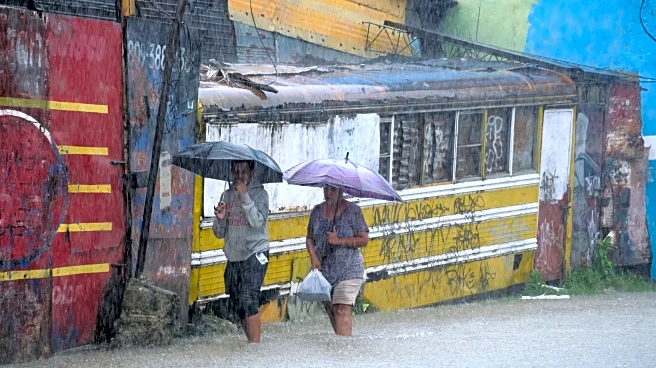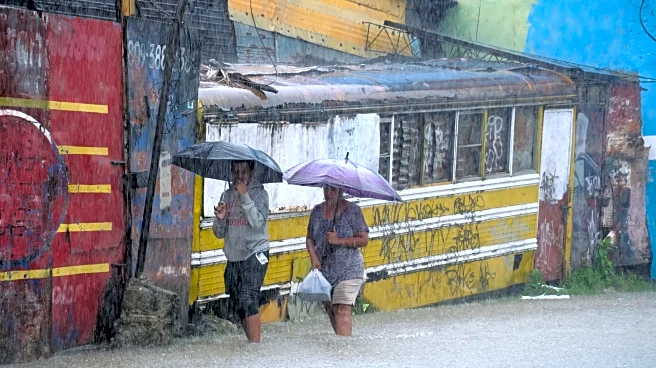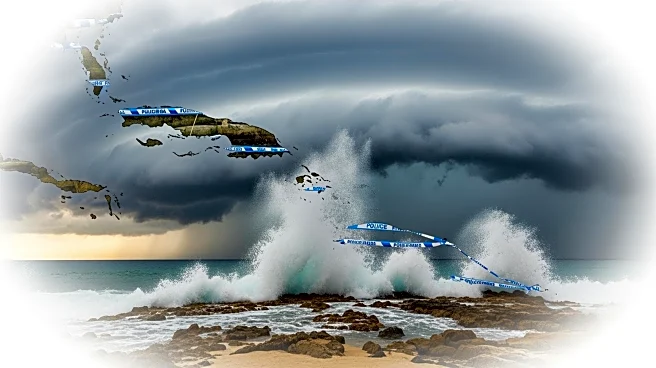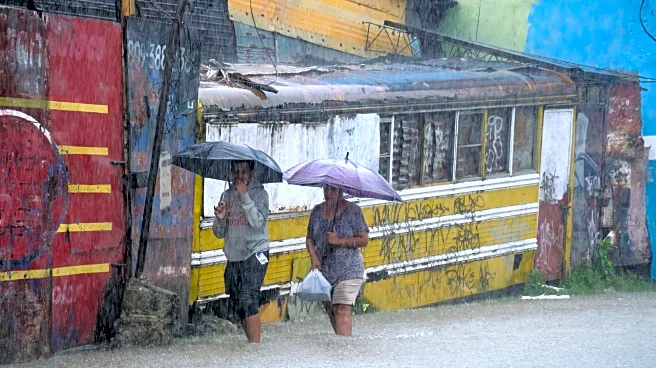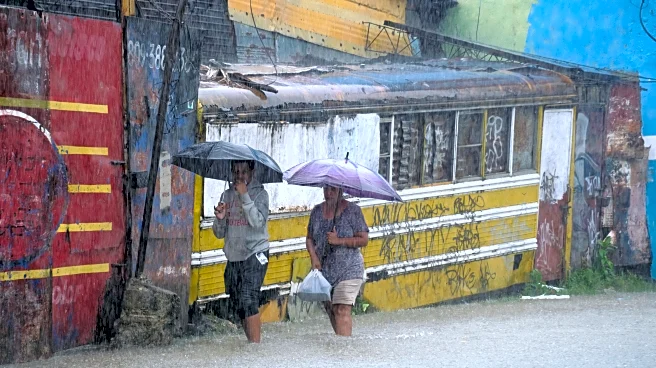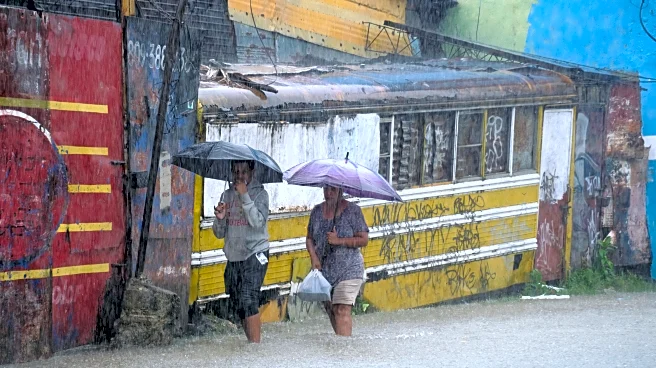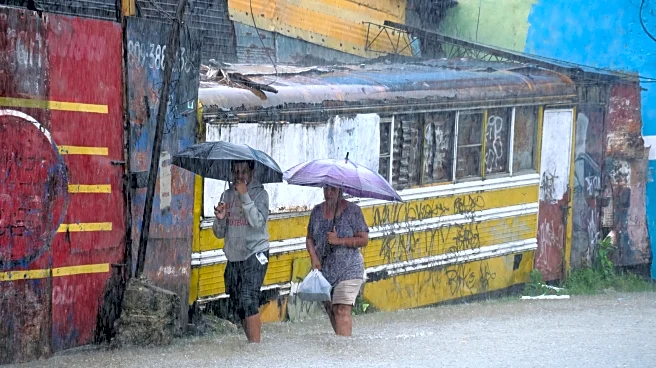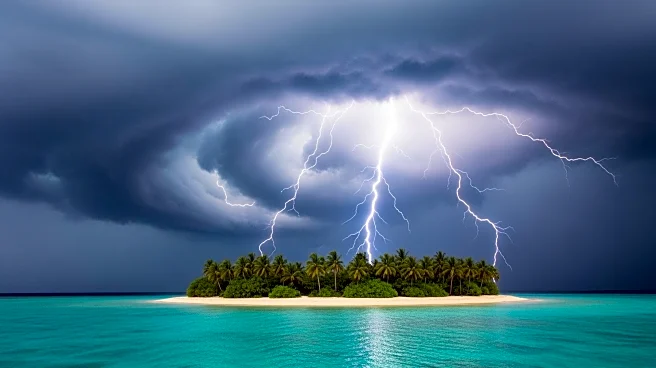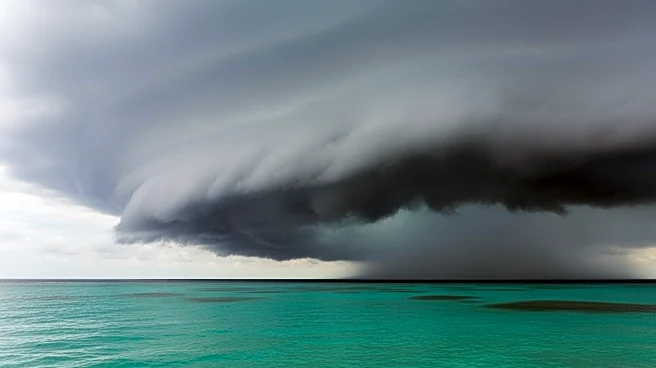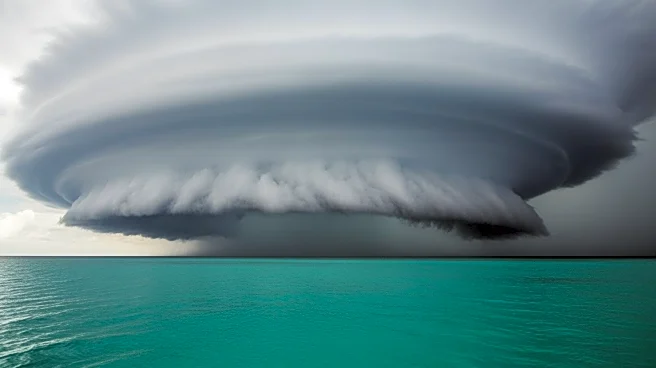What's Happening?
Hurricane Melissa has rapidly intensified into a Category 3 hurricane, posing a significant threat to the northern Caribbean, particularly Jamaica and southern Haiti. The storm is unleashing torrential
rain, with forecasts predicting up to 30 inches of rainfall in some areas. The hurricane is currently centered about 125 miles south-southeast of Kingston, Jamaica, and is moving slowly westward. Jamaican Prime Minister Andrew Holness has urged residents to take the threat seriously and prepare accordingly. The storm has already resulted in fatalities in Haiti and the Dominican Republic, with reports of rising river levels and infrastructure damage. The Cuban government has issued a hurricane watch for several provinces, anticipating the storm's approach.
Why It's Important?
The intensification of Hurricane Melissa poses a severe risk to the Caribbean region, with potential for catastrophic flooding and landslides. The slow movement of the storm increases the likelihood of prolonged heavy rainfall, exacerbating the threat to life and property. The impact on Jamaica and Haiti could be devastating, with infrastructure damage, displacement, and potential loss of life. The storm's progression also threatens Cuba and the Bahamas, highlighting the need for regional preparedness and response. The economic and humanitarian implications are significant, as affected areas may require substantial aid and recovery efforts.
What's Next?
As Hurricane Melissa continues its path, authorities in Jamaica have activated over 650 shelters and are preparing food packages for distribution. The Norman Manley International Airport in Kingston is set to close, and further closures may follow. In Haiti, efforts are underway to distribute food kits, although many residents are hesitant to evacuate. The storm is expected to approach Cuba and the Bahamas in the coming days, prompting further warnings and preparations. The situation remains dynamic, with potential for further strengthening of the hurricane.
